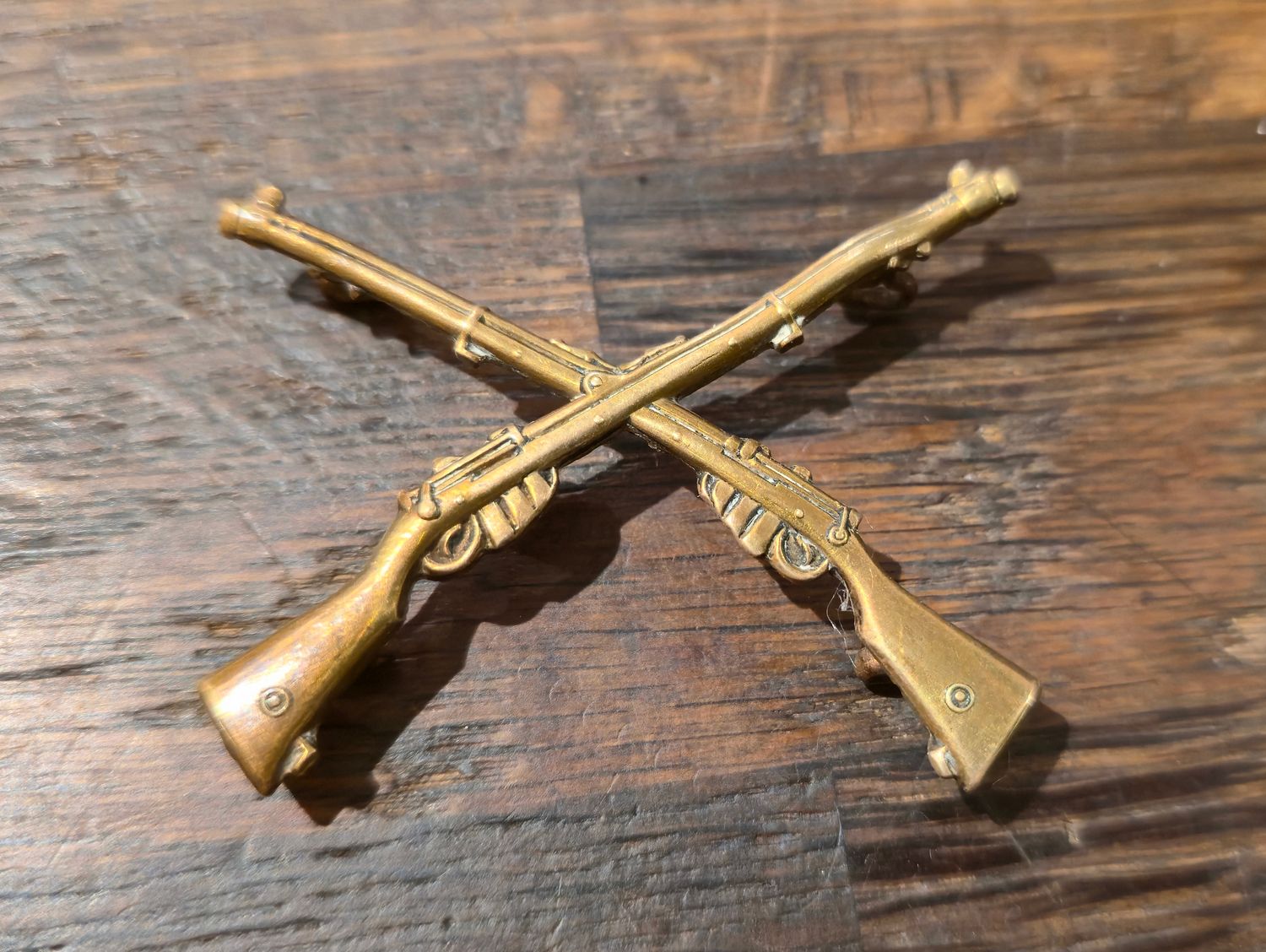Buy Online
WW1 British Rifle Marksman / Snipers Proficiency Arm Award Marksmen Badge
Trade, Proficiency & Skill at Arms Badges
The oldest trade badge which was worn by many armies is the crossed axes of the pioneer or sapper which appeared on the arms of these robust gentlemen as early as the Seven Years War.
In the British cavalry the Farrier’s badge, at first worn on the caps was being worn on the arms of some regiments in the 1830s. Badges for proficiency and skill-at-arms first appeared after the Crimean War to promote efficiency with the weaponry and equipment that the army was using. The badge of crossed muskets was the first, authorized by Royal Warrant in 1856 and originally intended as a prize badge. By 1881 these badges, like rank badges were worn somewhat indiscriminately and regulations for their wear was addressed.
For the period 1881-1902 trade, proficiency and skill-at-arms badges worn by cavalry were as follows:
SKILL AT ARMS & PROFICIENCY
Crossed Rifles: Authorized in 1856. In 1881 was to be worn in yellow worsted by every qualified marksman under the rank of sergeant on the left sleeve below the elbow. By Sergeants and above it was worn above the chevrons on the right sleeve. It was worn in gold wire by the best shot in the troop (later squadron) and when worn with a crown above, it was the best shot in the regiment or depot. Sergeants wore the crowned badge on the lower left sleeve. Sergeants of the best shooting troop/squadron/depot wore the crowned gold badge on their right sleeve below the elbow. The crossed muskets were changed to more modernized rifles with magazines sometime after 1890 presumably after the introduction of the Lee-Metford.

